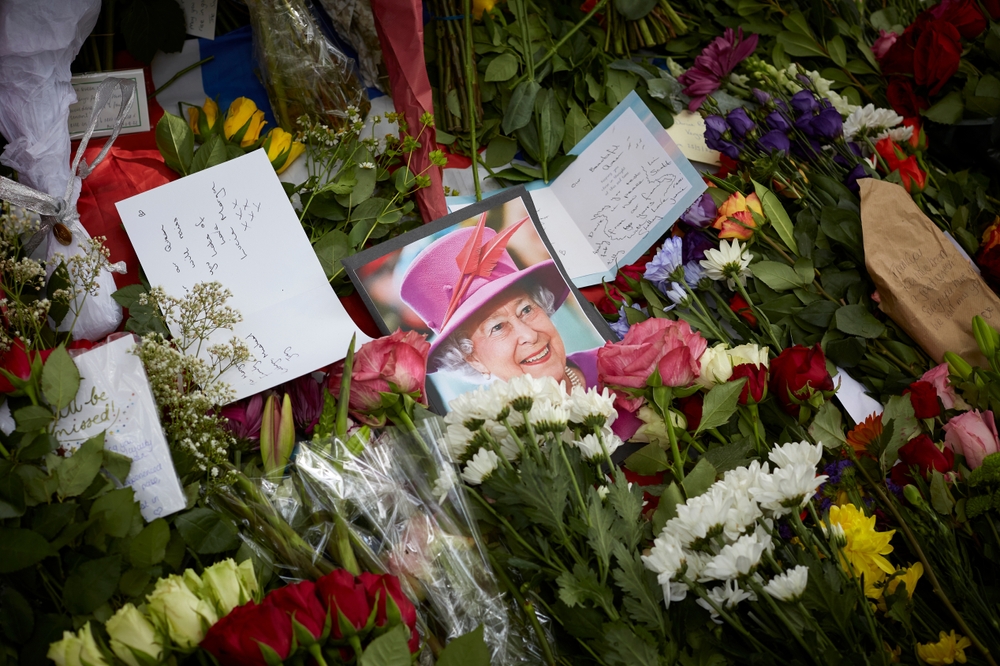Death of Queen Elizabeth II: A Guide to Events Ahead of the State Funeral
by Karen Rollins Sep 12, 2022

The UK is observing a period of national mourning following the death of Queen Elizabeth II on Thursday 8 September 2022.
Several traditional, historic, and solemn events will take place from now until the Queen’s state funeral on Monday 19 September.
Here is a guide to some of what will happen over the coming days:
Monday 12 September
Earlier on Monday, traditional proclamations announcing the new King were made across Guernsey, Jersey, Alderney, and Sark.
While the formal proclamation of the King took place in London on Saturday 10 September, the event is repeated in different parts of the UK in the days afterwards, as per tradition.
The proclamation is a constitutional formality to recognise the sovereignty of King Charles III.
In the afternoon, the Queen’s children led a procession behind the Queen’s coffin from Edinburgh’s Palace of Holyroodhouse to St Giles’ Cathedral.
A service celebrating the Queen’s life was held at 3pm. After 5.30pm members of the public can view the coffin which will lie at rest in the cathedral for 24 hours.
In the evening, King Charles will hold a vigil with other members of the Royal Family at St Giles’ Cathedral.
Tuesday 13 September
The Queen’s coffin will be flown from Edinburgh to London by the Royal Air Force accompanied by the Queen’s only daughter Princess Anne. The coffin will be driven to Buckingham Palace to rest in the Bow Room where it will be watched over by a rota of chaplains.
King Charles III and his wife Camilla will fly to Belfast to meet Northern Ireland’s political leaders. Charles will also attend a prayer service at St Anne’s Cathedral before returning to London in time to meet the Queen’s coffin.
Wednesday 14 September
The coffin will be moved by gun carriage from Buckingham Palace to Westminster Hall, where the Queen will lie in state for four days. The King and other members of the Royal Family will lead the procession behind the coffin.
At Westminster Hall the Archbishop of Canterbury will conduct a short service before the coffin is placed on a catafalque (raised platform). Each corner of the platform will be guarded 24-hours-a-day by soldiers from units that serve the Royal Household.
The public will be able to pay their respects to the Queen’s coffin from 5pm. Westminster Hall will remain open until 6.30am on Monday 19 September.
Thursday 15 September
Thousands of people are expected to queue to view the coffin while it lies in state. People have been told to come prepared with food and water because the wait could be up to 20 hours.
Friday 16 September
King Charles and his wife will visit Wales. A service will be held at Cardiff’s Llandaff Cathedral. This will mark the end of Charles’ visits to all four nations that make up the UK.
Saturday 17 September and Sunday 18 September
The Queen’s body will continue to lie in state. On Sunday a minute’s silence will be held across the UK at 8pm.
Monday 19 September
The day of the Queen’s funeral has been declared a bank holiday in the UK.
Public viewing of the coffin will end at 6.30am. A procession will begin at 10.44am from Westminster Hall to Westminster Abbey. The state funeral will begin at 11am.
Presidents, politicians, and heads of state from all over the world have been invited. Exact details about the order of service will be confirmed nearer the time.
Following the funeral, the coffin will travel in procession from Westminster Abbey to Wellington Arch before being moved to Windsor. A televised committal service will take place in Windsor’s St George’s Chapel.
The Queen will be interred alongside her husband Prince Philip, the ashes of her sister Margaret, their mother Elizabeth, and father King George VI.
Sources: BBC News, AFP News Agency, and ITV News.
Related content: Bailiwick of Guernsey in Mourning After Death of Queen Elizabeth II







